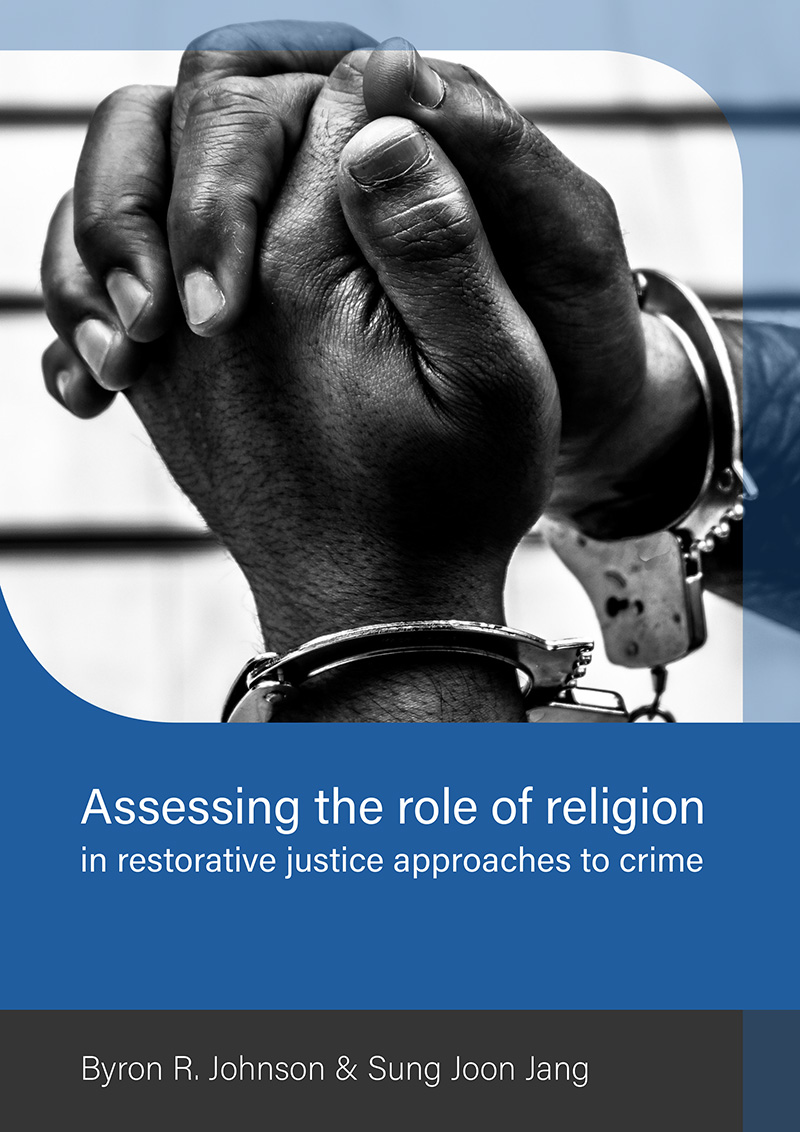The field of restorative justice can be traced to the 1970s and efforts in several North American communities that were applying peacemaking principles – often in tandem with faith-informed perspectives – to the criminal justice system, here we explore it in further detail
Mennonites and other groups experimented with victim-offender interactions that would lead to programs and models that could potentially be replicated in other communities.(1)
A common goal of these approaches was that they were designed to remedy the harm caused by a criminal act. These restorative efforts maintain it is necessary for an offender to acknowledge their behavior was harmful to others and take necessary steps to repair the harm caused by the criminal act.(2) Primarily utilized for first-time offenders involved in minor crimes, the number of restorative justice programs in Canada and the U.S., would grow over the next several decades. As these programs continued to gain in popularity, the American Bar Association would eventually endorse the practice of victim-offender mediation in the mid-1990s.(3)
The emergence of the restorative justice movement largely coincided with the growth of the victim’s rights movement, and the call for greater involvement of victims within the justice system. This convergence was captured in a report produced by the Office for Victims of Crime (OVC),(4) focusing on the restorative practice of victim-offender mediation. The report confirmed the important milestone that OVC funding could be used to support restorative justice programs.
This victim-centered approach to restorative justice posits that it can help better meet the needs of victims as well as strengthen ties between the offender and others – including the community – thereby enhancing desistance from crime and improving the justice system’s response to victims. Perhaps the most salient feature of restorative justice approaches is that they provide a mechanism for holding offenders accountable while simultaneously reducing reliance on incarceration and the potential for harmful consequences that can accompany a prison sentence time.
As a mechanism for repairing harm, addressing the needs of victims and communities, and promoting offender accountability as well as desistance from crime, restorative justice has evolved from an experimental practice in the 1970s to a common component of the justice system in virtually every state in America.(5) As jurisdictions continue to look for alternatives to incarceration that hold offenders accountable, meet the needs of victims, and promote public safety, restorative justice practices will likely become even more prevalent.
Religion, Offender Rehabilitation and Restorative Justice
Faith-based approaches to offender rehabilitation and prison reform have long been known to exist in correctional environments. But in recent decades, many empirical studies have been published which validate the efficacy of these faith-based approaches to offender rehabilitation and prison reform.(6) This relevant research literature, however, is often overlooked in discussions of restorative justice.
This oversight is unfortunate, since this literature is consistent with other empirical evidence linking religiosity to reductions in crime among adults and young adults.(7) Indeed, several systematic reviews and meta-analytic studies confirm increasing religiosity tends to be associated with lower rates of crime.(8) To follow, we summarize this literature and how it informs a more comprehensive understanding of restorative justice approaches.
Johnson and colleagues examined the impact of religious programs, operated by Prison Fellowship (PF; a Christian nonprofit organization for prisoners, former prisoners, and their families), on institutional adjustment and recidivism rates in two matched groups of inmates from four adult male prisons in New York State. After controlling for level of involvement in PF-sponsored programs, inmates who were most active in Bible studies were found to be significantly less likely to be rearrested during the year-long post-release period.(9) In a follow-up to this study, it was found that frequent Bible study participants were less likely to be rearrested 2 and 3 years after their release.(10)
In an evaluation of Prison Fellowship’s faith-based pre-release program known as the InnerChange Freedom Initiative (IFI), it was found that IFI program graduates were significantly less likely than the matched comparison group to be arrested and reincarcerated during the two-year follow-up period.(11) In another evaluation study, Duwe and King assessed the effectiveness of the IFI by examining recidivism outcomes among 732 offenders released from Minnesota prisons between 2003 and 2009.(12) A series of regression analyses document that participation in IFI significantly reduced the likelihood of rearrest (26 percent), reconviction (35 percent), and re-incarceration (40 percent) of former prisoners.
Hallett and colleagues conducted ethnographic interviews of inmate graduates of a unique prison seminary program at the Louisiana State Penitentiary (aka Angola).(13) Seminary graduates are deployed in bi-vocational pastoral service roles throughout America’s largest maximum-security prison. Drawing upon in-depth interviews with 107 seminary graduates conducted at Angola over a 2-year period, four themes emerge from inmate narratives: (a) the importance of respectful treatment of inmates by correctional administrations, (b) the value of building trusting relationships for prosocial modeling and improved self- perception, (c) repairing harm through intervention, and (d) spiritual practice as a blueprint for positive self-identity and social integration among prisoners.
In additional research at Angola, Jang and associates proposed that the inverse relationship between religion and misconduct, is mediated by inmates’ identity transformation.(14) To test this possibility, they conducted a survey of inmates at the Louisiana State Penitentiary. Results showed that inmates’ religious conversion and, to a lesser extent, religiosity itself were positively related to existential and cognitive transformations as well as a “crystallization of discontent,” which were in turn associated with two measures of emotional transformation in the expected direction. The crystallization of discontent and transformation in negative affect were related to disciplinary convictions as hypothesized, and their mediation of the effects of conversion and religiosity on misconduct were found to be significant.
These positive findings are explained more fully in the book, The Angola Prison Seminary: Effects of Faith-Based Ministry on Identity Transformation, Desistance, and Rehabilitation.(15) This book highlights how inmates lead their own congregations and serve in lay-ministry capacities in hospice, cell block visitation, delivery of familial death notifications to fellow inmates, “sidewalk counseling” and tier ministry, and officiating inmate funerals. Findings document deep-level change in self-identity change and religiously motivated desistance from prison misconduct.
Duwe and associates analyzed whether a Bible college program had an impact on prison misconduct by examining 230 offenders in the Texas prison system.(16) Findings suggest participation in the Bible college significantly improved offender behavior. The results also showed that participation significantly decreased the risk of incurring a discipline conviction, lowering it by 65 percent for minor misconduct, 80 percent for major misconduct, and 68 percent for any misconduct. The findings are consistent with existing research, which has generally found that participation in prison-based programming, including educational and faith-based programs, produces better misconduct outcomes.
Relatedly, several studies have shown that prison visitation is associated with reduced recidivism and may benefit inmates during the difficult transition back to society.(17) In order to understand better the connection between visitation and recidivism, a recent study examined whether visits from community volunteers – specifically clergy and mentors – had an impact on recidivism by examining 836 offenders released from Minnesota prisons.(18) The results indicate visits from clergy and mentors significantly reduced all three measures of reoffending (rearrest, reconviction, new offense reincarceration). The salutary effect on recidivism grew as the proportion of community volunteer visits to all visits increased. The findings suggest faith- motivated visitation may be consequential for prisoners during reentry and should be recognized as a programming resource, especially for higher risk offenders who lack social support.
In sum, religion matters in consequential and beneficial ways when it comes to offenders and ex-prisoners following release from prison.(19) In each of these studies, recidivism reduction was linked to a faith-based intervention and rehabilitation. The ability of these interventions to be connected to rehabilitation and restoration, is consistent with the principles of restorative justice, even though this connection is rarely recognized as part of the restorative justice movement. This is unfortunate, because the religion-crime literature offers important insights into the process of restoration. In the next section, we seek to clarify the connection between faith-based prison programs and the restoration of those who are incarcerated.

Religion, accountability, and restorative rehabilitation
Drawing upon recent research from diverse fields, as well as in-depth interviews with prisoners, we offer an explanation of how and why faith matters in identity transformation for prisoners and the prosocial behavior they come to exhibit (e.g., supporting charities, doing volunteer work, and serving others). Research consistently finds that religious commitment is a source for promoting or enhancing beneficial outcomes like well- being,(20) hope, meaning and purpose,(21) and self-esteem.(22)
In this way, religion not only protects from deleterious outcomes, but promotes prosocial or beneficial outcomes that are considered normative and necessary for a productive society. These prosocial skills may instill a greater sense of empathy toward others and thus lessen the likelihood of committing acts that harm others. Indeed, religiosity is now beginning to be acknowledged as a key protective factor that not only buffers or protects from harmful outcomes,(23) but as a variable promoting prosocial behavior.(24)
Recent research in an emerging sub-field that has been labeled “positive criminology”(25) suggests that more positive and restorative approaches – including those that foster social connectedness and support, service to others, spiritual experience, and identity change – may be more effective than the prevailing punitive tactics.
Consistent with traditional and contemporary restorative justice practices, these approaches seek to develop responsibility on the part of individuals who have been living a lifestyle of self-centered irresponsibility.(26) From this perspective, correctional practices should be explicitly designed to promote the virtue of responsibility or accountability.(27)
John Braithwaite’s crucial distinction between the “passive” and “active” responsibility is helpful here. Passive responsibility is inherent in the phrase “serving time,” which implies the state holds a person accountable for their past actions. On the other hand, active responsibility is at the heart of restorative justice processes which focus on “taking responsibility for putting things right into the future.”(28)
This active responsibility is brought about by a “redemption script” that allows a person to claim a “coherent and convincing” narrative supporting a significant identity transformation: from a selfish offender and/or addict to a responsible and helpful “new person.”(29) Therefore, rather than viewing the person as a set of risks to be managed or a bundle of needs to be met, the person is understood to have strengths that can be deployed for the benefit of self and others.(30)
Jang and associates have recently conducted a series of studies examining whether religion contributes to fostering accountability among prisoners. In a quasi-experimental study assessing the effectiveness of a faith-based program for prisoners in Colombia and South Africa, they found that the program participation enhanced religious involvement – measured by religious beliefs (perceived closeness to God and importance of religion) and behaviors (attending religious services and praying and reading the Bible or other sacred book outside of religious services) – among prisoners.(31)
Program-enhanced religiosity was found to increase accountability (i.e., caring about doing what is right and being willing to accept one’s responsibility even if nobody watches or it costs oneself), which in turn reduced the risk of engaging in aggression towards other inmates.
In another quasi-experimental study conducted to evaluate a faith-based program operating in two Texas correctional facilities, Jang and Johnson(32) measured the accountability to other people (human accountability) and God or a higher power (transcendent accountability), using 11- and 10-item scales, respectively, developed by an interdisciplinary team of researchers.(33) Consistent with the findings from the study of Colombian and South African prisoners, program participation increased religiosity, and the increased religiosity was found to foster both human and transcendent accountability. When relationships between the two accountabilities and the risk of aggression towards other inmates were examined, however, only human accountability was significantly related to the likelihood of interpersonal aggression.
To further explore the relationships among prisoner religiosity, accountability, and the risk of interpersonal aggression, Jang and associates analyzed cross-sectional data collected from surveys with male and female inmates in Texas prisons.(34) Specifically, they first hypothesized that prisoner religiosity would be positively related to transcendent accountability given that the more prisoners are involved in religion, the more likely they are to develop a sense of being accountable to God or a higher power for their thoughts, attitudes, and behaviors.
This sense of accountability to a transcendent guide for living is expected to lead to a sense of being accountable to other people, as major religions teach virtues relevant to other human beings as well as God or a higher power. Thus, they also hypothesized that transcendent accountability would be positively related to human accountability.
Transcendent and, to a greater extent, human accountabilities were likely to have positive behavioral outcomes, particularly, those involving other people and thus were hypothesized to be inversely related to the risk of aggression towards other prisoners. The inverse relationship was further hypothesized to be explained in part by two virtues related to accountability, empathy and self- control, given that the relational aspect of being accountable to others would underscore empathic concern for others and self- regulation that modulates one’s impulses out of such concern.
In addition, empathy and self- control were hypothesized to be inversely related to the risk of interpersonal aggression by reducing the likelihood of losing a temper.
Results from estimating a structural equation model of mediational relationships generally provided support for these hypotheses. That is, Jang and associates found that prisoner religiosity was positively related to transcendent accountability, which was in turn positively associated with human accountability.
They also found human accountability was significantly related to both empathy and self- control in the expected (i.e., positive) direction, while transcendent accountability was not related to either virtue. Finally, self-control, though not empathy, was found to be inversely related to the risk of aggressive misconduct via a lowered likelihood of losing a temper, as hypothesized. In sum, the overall results provide preliminary evidence of religion being a source of restorative References: rehabilitation among prisoners.

Conclusion
Research is beginning to help us understand the importance of religious influences in protecting people from harmful outcomes as well as promoting beneficial and prosocial outcomes. This beneficial relationship is not simply a function of religion’s constraining function or what it discourages – opposing drug use or criminal behavior – but also through what it encourages – promoting behaviors that can enhance purpose, educational attainment, well-being, and human flourishing. New research is helping to more fully understand the ways in which religion directly and indirectly impacts crime, prisoner rehabilitation, as well as provide insights for reimagining prison reform. Research is beginning to confirm that religious programs can play an important role in promoting the health and well-being of incarcerated individuals.
As policy makers consider strategies to reduce crime, it is essential for such deliberations to consider seriously and intentionally the role of religion and religious institutions in implementing, developing, and sustaining multifaceted approaches. Restorative justice approaches to crime and incarceration will be needlessly incomplete unless the power of religion and religious communities, and the networks of social support found within them, are integrally involved. Indeed, a better understanding of the mechanisms associated with prosocial behavior will assist in the development of future prevention and intervention strategies.
Toward this end, our research on faith-based programs within prisons is helping us to understand that correctional programs seeking to counter the harmful effects of self-centered behavior and social isolation, while also promoting accountability, self-control, desistance from crime, identify transformation, and prosocial behavior, will likely benefit from faith-based restorative justice approaches.


